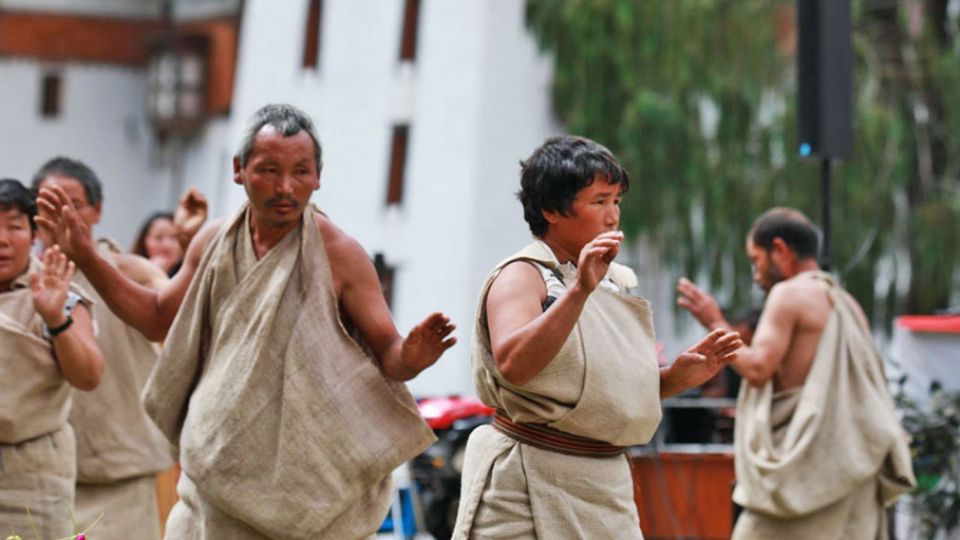May 16, 2024
THIMPHU – The Monpa community in Trongsa, once stewards of age-old customs, finds itself at a pivotal juncture as they welcome modernisation. They are grappling with acknowledging the benefits of modern amenities while safeguarding their cultural legacy, striking a nuanced equilibrium between tradition and advancement.
The three villages of Langthel gewog—Phumzur, Wangling, and Jangbi—are home to the Monpas, considered among the earliest settlers in Bhutan. They worship Jwodurshing, also known as the Black Mountain, their ancestral abode for generations. Historically, they led lives as hunter-gatherers in the forests, practicing shifting cultivation. Traditionally, their attire comprised garments crafted from nettle plant fibres known as Pagay, and they communicate in their native language called Monkha, a unique dialect with roots in the Tibeto-Burman language family.
Presently, the three Monpa villages are home to about 370 individuals residing in around 60 households. With the advent of roads, the villages have witnessed transformative changes. Residents now engage in the cultivation and sale of cash crops like cardamom and oranges. The younger generation attends schools, and basic healthcare facilities are available, alongside other modern conveniences, marking a significant shift towards modernisation in Monpa communities.
Pagay has become increasingly uncommon attire in the villages of Langthel. Nowadays, the residents prefer the simplicity of gho and kira for their everyday clothing, saving their Pagay for special events.
“The government encourages us to wear Pagay during ceremonies to uphold our cultural heritage,” said Jangbi tshogpa, Sonam.
Tawla, an 81-year-old resident of Jangbi, fondly recalled a time when wearing Pagay was considered a luxury.
“Back then, we relied on the forest for sustenance and couldn’t afford new garments,” he said. Pagay, lacking sleeves, provided little defense against the cold winters and rugged terrain, posing challenges to daily life. “We owe gratitude to the monarchy for the advancements in our village, which have made modern amenities accessible to us Monpas.”
In addition to Pagay, another tradition fading in the Monpa village is the practice of sham and shaman, essential for performing the ritual known as Shilaidung. There is a declining interest among educated youths in these traditional practices alive.
The Monpa community maintains a profound bond with nature, expressing their reverence through a ritual known as Shilaidung during winter and spring. This ceremony is dedicated to appeasing their local deity, Jowodurshing, where Monpas offer their initial harvest. Moreover, each village honours its unique local deity: Zhiripa in Wangling, Kipmugchin in Jangbi, and Wompo in Phumzur. While Shilaidung is primarily observed during winter and spring, it is also conducted in the summer to ward off misfortune and safeguard against illness.
Sonam reminisced about the past when Shilaidung was celebrated grandly in the villages. In Tawla’s youth, the event brought together all three Monpa villages, appointing a treasurer for the occasion. However, Sonam expressed concern over the declining number of sham and shamans, fearing for the future of the ritual. Nowadays, Shilaidung has lost its former splendour, with each village organising its own ceremony, leading to diminished unity among the communities.
During Shilaidung, a temporary halt is observed for foraging from the forest for three days, commencing from the bridge that marks the boundary between Mangdechhu and the Monpa community.
Sonam highlighted efforts to reclaim the Monpa narrative and safeguard their vibrant culture, language, and environment.
To support these endeavors, they secured a research grant of Nu one million from the Tribal Trust Foundation in the USA, facilitated by the Tarayana Foundation and Yangphel Adventure Travel.
“One method to pass on knowledge to the youth involves transmitting wisdom from elders to the younger generation through debates conducted in Monkha,” Sonam said.
The 18-month research project began last June.
“Despite Monkha being spoken by everyone in the community, the dialect and purity of the language are gradually fading,”Sonam said. “The Monkha spoken today differs from the language spoken by elders like Tawla.”
Reflecting on the past, Sonam said that there was now a broader emphasis on preserving the unique Monpa culture and traditions. This, he said, helped inspire youth to learn and uphold the heritage.
Sonam expressed a sentiment of both gratitude for the significant improvements in their lives and concern over the fading of their traditions and culture, which are integral to their identity as Monpas. “Nevertheless, we are deeply dedicated to preserving our rich heritage and traditions.”


